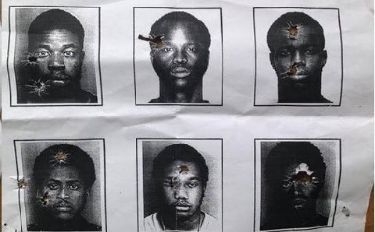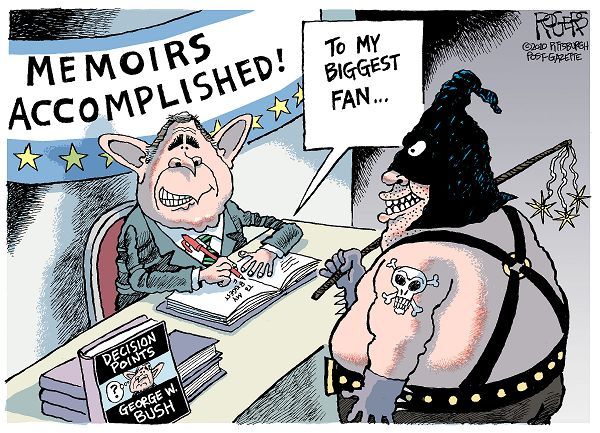It is one year since a young black man was gunned down by a white police officer on the streets of Ferguson, Missouri for jay walking. Michael Brown’s death and the subsequent cover up of his murder by the police and prosecutor’s office sparked months of demonstrations that were marked by more police brutality and violation of the constitutional rights of the protestors and the press.
Seven months later, the Justice Department cleared the white police officer, Darren Wilson, of civil rights charges. However, in a scathing report the police and the courts routinely demonstrated racial bias and violated the constitutional rights of the black citizens of Ferguson with illegal traffic stops, arrests without reasonable suspicion and excessive fines for minor infractions. Then Attorney General Eric Holder misguidedly thought that this report would effect change. The still mostly white Ferguson city council rejected the report and its reforms. And, as seen by this week’s violence, arrests of reporters and use of excessive police tactics during the demonstrations on the anniversary of Michael Brown’s death, nothing has changed and once again there is a state of emergency in Ferguson and St. Louis County.
The state of emergency was precipitated by the shooting and critical wounding of an 18 year old black man by undercover police who claim that the young man was firing at them. The officers were not wearing body cameras and unmarked vehicle they were in was not equipped with a dash camera. So there is only their word.
In the original New York Times article, this quote, cited by Esquire‘s Charles Pierce, from State Senator Maria Chappelle-Nadal, whose district includes Ferguson, was removed:
“After a year of protest and conversation around police accountability, having plainclothes officers without body cameras and proper identification in the protest setting leaves us with only the officer’s account of the incident, which is clearly problematic,” Kayla Reed, a field organizer with the Organization for Black Struggle, said in a statement. State Senator Maria Chappelle-Nadal, whose district includes Ferguson, said on Monday that she was seeking information about the shooting. “I’m just trying to figure out the timeline of events and ensure that police officers are following protocol,” said Ms. Chappelle-Nadal, who has been active in protests here. The shooting, which came toward the end of an otherwise peaceful day, was another vexing turn for activists and the authorities alike. It was the second consecutive night of gunfire on West Florissant Avenue.
There is also the issue of arresting reporters on bogus charges supressing freedom of the press:
Huffington Post, Washington Post Reporters Charged For Doing Journalism In Ferguson (UPDATE)
by Michael Calderone, Huffington Post
“You’d have thought law enforcement authorities would have come to their senses about this incident.”
Reporters from The Huffington Post and Washington Post have been charged with trespassing and interfering with a police officer’s performance, a chilling setback for press freedom coming nearly a year after their arrests in Ferguson, Missouri.
The Huffington Post’s Ryan J. Reilly and Washington Post’s Wesley Lowery were arrested while working out of a McDonald’s on Aug. 13, 2014, just four days after white police officer Darren Wilson shot and killed unarmed black teenager Michael Brown.
Police claimed the journalists, who were covering the unrest that followed the police killing, didn’t leave the restaurant fast enough. Reilly described a police officer shoving his head against glass during his arrest, while Lowery said an officer pushed him into a soda machine. Both Lowery and Reilly were quickly released and not charged with any crime at the time.
The decision to charge Reilly and Lowery now is especially surprising, given that St. Louis County settled just last week with two other journalists arrested while reporting in Ferguson.
Until recently, Reilly and Lowery believed their incidents with police were long over with. The Huffington Post reported last month that the St. Louis County Police Department filed incident reports in late April describing the two reporters as trespassing in the McDonald’s. Police referred their cases to the St. Louis County counselor’s office, which, given a one-year statute of limitations, had until Thursday to bring charges.
Peaceful, unarmed protesters and reporters doing their jobs are harassed and arrested. Now, the vigilantes have arrived:
Heavily-armed members of a controversial right-wing “patriot” group added an extra dose of unease to protests in Ferguson, Missouri, early Tuesday.
The Oath Keepers organization says its members – all former military, police and first responders – pledge to “defend the Constitution against all enemies, foreign and domestic.”
However, St. Louis County Police Chief Jon Belmar described their presence as “both unnecessary and inflammatory.”
Protesters and police confirmed that a handful of Oath Keepers with what appeared to be assault rifles, bulletproof vest and camouflage gear were seen early Tuesday on the streets of Ferguson, which was under a state of emergency following demonstrations pegged to the anniversary of Michael Brown’s death.
Several protesters confronted members of the group, asking why they were allowed to openly carry weapons.
“I’m happy that we’re able to defend ourselves,” one Oath Keeper replied in footage from NBC station KSDK. “It’s been our right for a long time.”
The St. Louis County Police Department said it would consult with the St. Louis County Prosecuting Attorneys Office about the legalities of the issue.
Missouri allows individuals with concealed weapons permits to openly display firearms, unless it is done in an “angry or threatening manner.”
Shawn McGuire, a spokesman for St. Louis County Police, said he did not believe officers had confronted the Oath Keepers or told to leave.
Holy crap on a pogo stick, protesters are arrested for lawful assembly, two reporters are being railroaded, black men are still being indiscriminately shot by white cops, yet, civilian white men, armed to the teeth are allowed to roam free on the streets of Ferguson, unchallenged by the police or courts. Seriously, nothing has been learned from last year. Not one damned thing.



Recent Comments